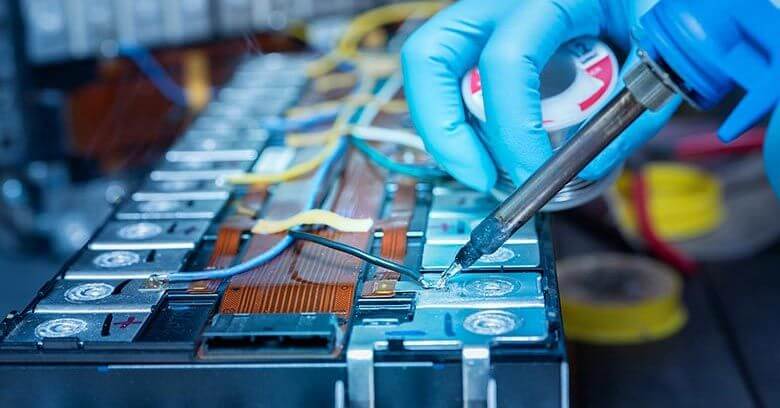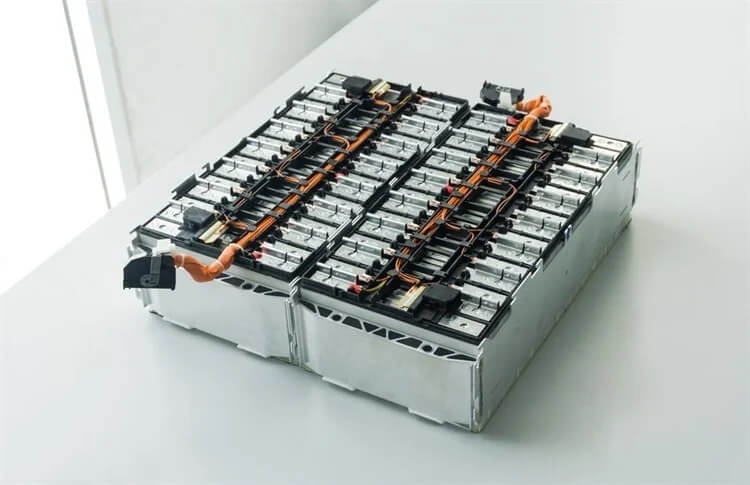In the energy environment of today, energy storage technologies play a crucial role. Efficient energy storage technologies are becoming more important in response to the increasing demand for renewable, consistent, and dependable energy sources. Renewable energy sources, like solar and wind power, can have their electric power stored using energy storage systems. This ensures that we can continue to have access to environmentally friendly energy sources, such as wind and solar, even when they aren't in use. Here we will look at the top battery energy storage varieties and some of the most prominent non-battery based energy storage methods for large-scale applications.

These days, pumped hydropower storage (PHS) is among the most popular ways to store electricity. PHS is a method of storing renewable energy surplus power by pumping water from lower-level reservoirs to higher-level ones. When the need for power is at its highest, the water is released back into a lower reservoir and used to power a turbine once again. This method of storing extra electrical capacity is efficient and relatively inexpensive, and it may be released during peak times when it is most needed.
Another method of storing energy involves pumping pressurised air from underground reservoirs or caverns into an onsite turbine at regular intervals to meet the grid's peak power demand. Utilities can enhance their operational efficiency and minimise additional costs by utilising compressed air energy storage (CAES) systems, which enable them to make the most of their current infrastructure while also offering extra services such as peak shaving or load shifting. This way, they can continue to use their assets while reducing stress during peak periods, all without having to construct new plants.
Flywheel technology uses rotor blades spinning in a vacuum to store energy, as opposed to other methods that depend on chemical reactions taking place within a battery unit. With no noticeable deterioration over time, flywheels provide substantially quicker response rates than traditional battery banks. Flywheels are not commonly found in residential areas due to their large footprint.
Innovative technology known as thermal energy storage (TES) provides a potential answer to the problem of how to store and release heat energy. We may use the energy from renewable sources like wind and solar to charge a "thermal battery" that can retain heat for a few hours or days.
During times when renewable energy sources are in short supply, this stored energy can be utilised to provide electricity on demand. Because it allows us to use renewable energy during its most cost-effective periods—usually during sunny or windy periods—this technique changes the game for renewable energy.
The end result is a more stable system and lower total electricity costs.
As an easy way to store energy, TES is one of its primary advantages. Most thermal batteries are made of common, inexpensive materials that are easy to work with and keep running for a long time.
One example is the widespread use of solid carbon by TES firms like Antora Energy. Solid carbon is both inexpensive and easy to come by. More than 30 million tonnes of solid carbon are already accessible each year, which is equivalent to 50 times the amount of lithium that is already on the market.
The technology can be easily adjusted to fit a wide range of uses, from massive power plants to tiny homes, because it is very scalable.
A potential long-term energy storage solution is the creation of green hydrogen using electrolysis that is fueled by renewable energy sources such as solar and wind.
Grid balancing power can be generated from hydrogen created through this process, which can then be stored and converted back to electricity as needed. Its ability to be burned on demand without producing greenhouse gas emissions is its most significant feature.
The capacity of hydrogen to be kept for months without experiencing a loss of power due to discharge is a major benefit that makes it a compelling choice for long-term energy storage. While this is true, lithium-ion batteries can only hold a charge for a few hours at most.
Green hydrogen's "power-to-gas-to-power" process, in contrast, is more costly and inefficient than alternative storage methods, despite its large energy storage capacity.
The Massachusetts Institute of Technology found that the efficiency of transferring power to gas and back to power ranges from 18% to 46%. To give some context, the efficiency of pumped-storage hydropower is closer to 70%-85%.
Although it has great potential as a form of energy storage, the necessary infrastructure and logistics to mass-produce it are still in their infancy.
Reducing carbon dioxide emissions and maybe even establishing a circular economy might be greatly aided by increasing industrial efficiency and decreasing production costs.
Many initiatives have been launched in the European Union, including Green Skills for Hydrogen, a training and skill conversion programme supported by the EU that aims to provide employees with the know-how to adjust to the new technology.
Using regenerative braking and the force of gravity, a novel energy storage device called a gravity battery may transmit renewable power to the grid.
A heavy object can be lifted into the air or to the top of a deep depression in the ground using renewable energy, and then lowered when energy demand is high. This is how the batteries function. By manipulating the wires to raise and lower the item, the problem of inconsistent energy generation can be solved by producing electricity on demand.
Because they don't self-discharge, gravity batteries may store energy for months—if not years—longer than traditional batteries like lithium-ion.
An innovative way to deal with the surplus of energy produced during sunny days has been found: repurposing abandoned mines throughout the world as energy storage facilities.
Using existing infrastructure is a major perk of utilising abandoned mines for energy storage.
The mines are already linked to the electricity grid, which makes installation easier and cheaper.
A new analysis by the International Institute for Applied Systems Analysis (IIASA) reveals that these abandoned mines have the potential to store energy equivalent to 70 terawatts—more than enough to power the entire world for a day.
This method holds tremendous promise, considering that there are around 550,000 abandoned mines in the United States alone.
Companies are already working on gravity batteries that can be dropped wherever and don't require mines. New opportunities for renewable energy would arise as a result of this technology's ability to scale energy storage while simultaneously making it more accessible and affordable.
Gravitricity, an innovative project in the United Kingdom, has been conducting trials of a gravity battery in Edinburgh. A 15-meter steel tower is being used to raise and lower the heavy object utilising solar power.
The project only ran for ten seconds, but it proved the principle could be applied.
These gravity batteries could be able to reach depths of up to 2 kilometres if they were to be constructed in Africa. Connecting these batteries to the grid might greatly expand power availability in Africa. It may be the most practical way to store renewable energy in Europe.
Despite gravity batteries' obvious potential, numerous obstacles remain in the way of their widespread use. Aside from the necessity to adapt the technology for various locations and use cases, cost is a major consideration.
If we want these batteries to be more efficient and dependable, we need to do more study. However, there is a strong case for delving deeper into gravity batteries due to its ability to offer long-term energy storage through the utilisation of current infrastructure.
Lead-acid batteries are popular for storing surplus power due to their low maintenance requirements and high density-to-weight ratio. The two electrodes of a lead-acid battery are the positive (made of lead dioxide) and negative (made of pure lead) sides. When an electric charge is applied or removed from these electrodes, they react with an electrolyte, causing energy to be stored or released. Due to their short lifespan, these batteries may only last a few years. However, technological developments have led to longer lasting choices that are more efficient overall.
The stationary energy storage of lithium ion batteries is on the rise due to their high power density and their ability to deliver a lot of juice from a little package. Because of their longer lifespan, they end up being less expensive than lead acid in the long run. When compared to other battery chemistries, their working temperature range is higher, giving designers more leeway to incorporate stationary energy storage into new or existing systems. In general, the exceptional efficiency and extended life cycles offered by lithium ion batteries make them a great choice for stationary energy storage. Learn more about lithium ion batteries and other lithium-based energy storage solutions on our storage page.

Modern methods of storing energy are developing at a dizzying rate. Choosing the best option from the growing number of options might be challenging. Choosing the correct energy storage technology can be challenging; here are some suggestions to assist:
1. Analyse Your Energy Consumption.
Make sure you know exactly what you need before you start looking into energy storage technologies. Consider things like, "How much energy will I require stored?" How long do I require my energy reserves? In what kind of setting will the energy storage device operate? Which energy storage technology is ideal for your needs depends on all of these factors. Keeping these requirements in mind, assess the size and length of the charge/discharge cycle, as well as related factors such as cost, scalability, safety, project site, and temperature.
2.Determine Which Energy Storage Technologies Are Most Sufficient.
Products and systems for home and commercial energy storage based on batteries are offered by Renon Power. Lead acid or lithium ion batteries are the way to go unless you're building a massive energy storage system for a utility.

3. Evaluate Space Needs and Expenses.
Lithium batteries pack more power into the same volume as their lead acid counterparts, making them ideal for situations when storage space is at a premium. Though more expensive initially, lithium batteries have a cheaper total cost of ownership over the lifespan of the energy storage system because they survive longer than lead acid batteries. Additionally, unlike lead acid batteries, lithium batteries never need to be serviced. Lead acid has a cheaper initial investment, but it requires more frequent battery replacements and a more rigorous maintenance schedule. "How to store solar batteries" delves more into the topic of space requirements.
4. Figure out if you need to connect to the grid.
It is not always easy to tell whether grid interconnection is desirable, necessary, or even possible for a specific system or structure. Electricity supply, infrastructure, municipal rules, and the cost of connecting to the grid should all be considered in making this choice. Because these factors affect the potential costs and benefits of joining, it is important to make a list of them before making a final decision. Ensuring affordable and dependable access to electricity should be the ultimate goal.
5. Look into Energy Storage System Rebates and Incentives in Your Area.
Investigating the various rebates and incentives offered by regional, state, and federal organisations is an important aspect of purchasing an energy storage system. With these, you can cut down on installation and maintenance expenses. Researching the tax benefits of energy storage systems can help with both short-term cost savings and long-term planning. To maximise your return on investment (ROI) from an Energy Storage System investment and keep abreast of any government-level changes or upgrades, it is advisable to research these incentives.
6. Pick between hiring a professional installation service or doing it yourself.
You might choose to hire a professional installation company or do it yourself when thinking about upgrading your home or company's energy storage. Because of their experience, training, and access to high-quality equipment, hiring an installation service can help you save both time and money. But if you're the type of person who enjoys taking on projects on your own, you might find this kind of work more enjoyable and satisfying. Although it demands patience, the main benefit is that it grants you greater control over the entire process. You should weigh the pros and cons of hiring an installation service vs doing it yourself to find out what's best for your budget, timeline, and level of satisfaction.

扫码关注
We use cookies to understand how our audience uses our site.
Renon Power websites use cookies to deliver and improve the website experience. See our cookie policy for further details on how we use cookies. Privacy Policy